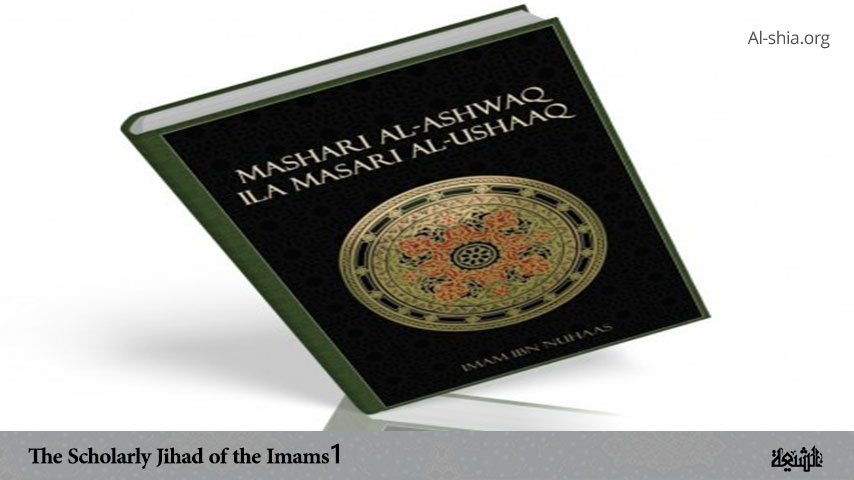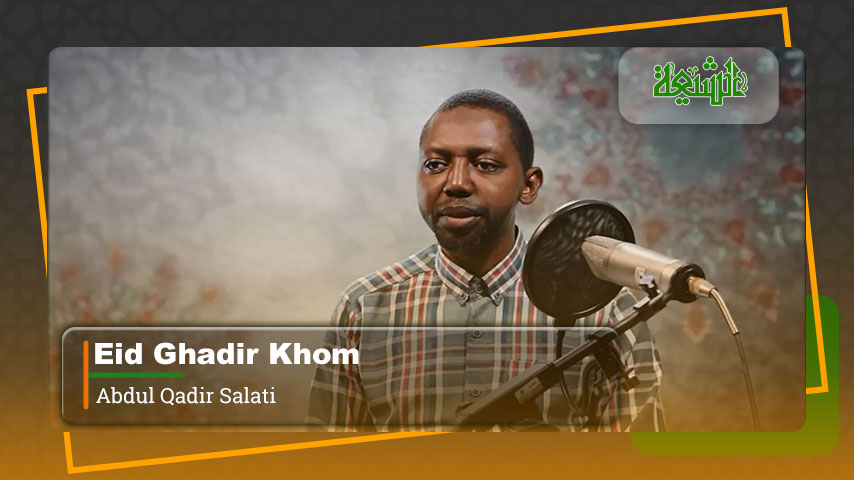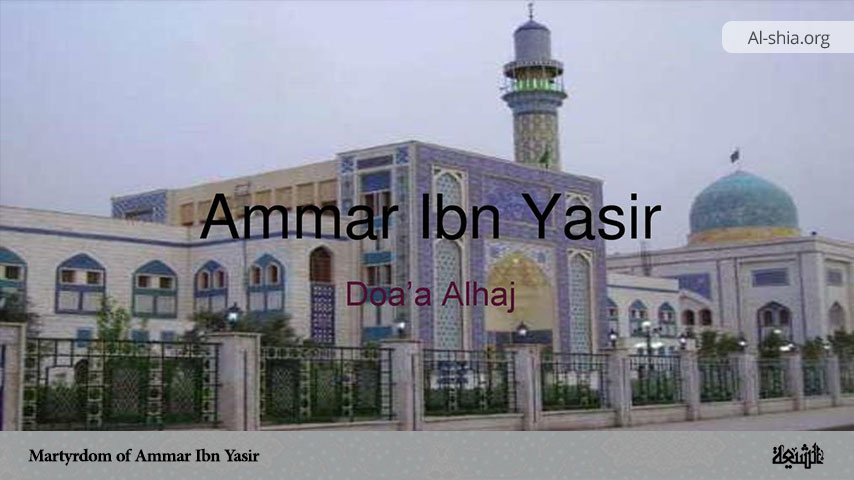The period under discussion (95-148 A.H /712-765 A.D.) began and ended in the times of the Vth and VIth Imams. The persecution of the Shi’is continued unabated from Mu’awiya’s time to almost the very last days of the Umayyads, although this dynasty in its latter days was considerably weakened by internal strife. Zayd, the grandson of Husayn, rose up to establish the rule of religion and justice in 122/740, but he was felled by an arrow in his forehead, and his army of 15,000 fled.
His body was exhumed by order of the Umayyad caliph, Hisham, who was mutilated, beheaded and crucified in Kufa and left there for years on the cross. Then Hisham’s successor, al-Walid, ordered the body to be burned, and the ashes scattered on the banks of the Euphrates. Zayd’s son, Yahya, rose up in Khorasan; coincidently he also was killed by an arrow which pierced his brain. He was beheaded; the head was sent to al-Walid and the body was crucified. This was in 125/743. The body remained on the cross till Abu Muslim al-Khurasani rose in Khorasan and the call rose up against the Umayyads “to please the progeny of Muhammad”, and Umayyad rule ended.
But the persecution in itself was a major cause of the spread of the persecuted Shi’a faith. Muhammad Jawad al-Mughniya writes: “The Shi’is offered arguments from the Qur’an and the traditions of the Prophet and advanced intellectual reasons to the effect that the love of the Prophet’s family members was obligatory, and that it was essential to follow them and to hold fast to their rope; that it was obligatory to keep aloof from their enemies. They wrote many books about their superiority and virtues. But none of these books or arguments proved as effective in strengthening and spreading the Shi’a faith as did the policy of Mu’awiya and his Umayyad successors.
Surely the persecution carried out by the Umayyads was more effective than a thousand and one books or than a thousand and one proofs in proving the status of ‘Ali and confirming his divine right to the Caliphate. (1) “‘ Dr. Taha Husain says: “So far as propagating beliefs and attracting people to follow them is concerned, nothing is more effective than persecution. It creates sympathy for those who undergo suffering and are engulfed by tragedies, and who are subjected to pressure by the ruler. To the same degree, it creates revulsion against this ruler who resorts to injustice, carries his tyrannies to the furthest limit and overburdens the population with hardships.
For this reason, the Shi’ a cause became great during the last decade of Mu’awiya’s reign, and their call spread -and what a spread it was in the eastern Islamic countries and southern Arabia. And by the time Mu’awiya had died, many people, and especially the general public in Iraq, believed that hate of Umayyads and love of the Ahl al Bayt was their religion.'(2) Wellhausen writes: “All the people of Iraq during Mu’awiya’s reign, and especially the Kufites were Shi’i and this was not only among individuals but among whole tribes and chiefs of the tribes.”(3)
Arabia, Iraq and Khorasan, together with Yemen and Bahrain were in turmoil; hatred of the Umayyads became an established factor of the body politic, and to the same degree people gravitated towards the descendants of ‘Ali. Several factors led to this result:
1. They were the Ahl al-Bayt; Allah had chosen that house for His Prophethood; it was appropriate that the people should choose them for their guidance.
2. They were the first to rise against the Umayyads and their tyrannies; they were the first to speak for the oppressed masses and to sacrifice their lives for this cause.
3. Not only the Ahl al-Bayt, but even their Shi’is, right from the beginning of Umayyad rule, worked openly and secretly against those tyrants; and they faced all the consequences: massacres, banishments, imprisonments, crucifixions, and all types of torture.(4) Ibn al-Athir confirms that when the ‘Abbasids joined this campaign towards the end, “they were using the slogan that they wanted to avenge the murders of Husayn, Zayd and Yahya.”(5)
Wellhausen writes: “The ‘Abbasids tried their utmost to keep secret from the people their intention that they wanted to replace the descendants of Fatima; instead, they pretended that they were doing whatever they were doing for the sake of the Fatimids. They rose in Khorasan and other places claiming that they wanted to avenge the martyrs of the children of Fatima.” (6)
“The ‘Abbasids rose in the name of the ‘Alawites, and on the shoulders of their Shi’is. (After the success) they changed their attitude towards them, and their oppression of the Shi’is increased in magnitude and intensity.” (7)
Muhammad Ahmad al-Buraq says: “The call really was for the ‘Alawites because the Khurasanis were attached to the descendants of ‘Ali, not to the descendants of Abbas. That is why Saffah and his successors always kept their eyes open and tried to prevent Shi’ism from spreading further in Khorasan
They encouraged the poets to praise them (i.e., the ‘Abbasids) and gave them rewards, and those poets used to cast aspersions against the descendants of ‘Ali.” (8)
“This led the ‘Abbasid ‘caliphs’ to renounce the faith of Ahl al-Bayt (which they had followed up to the beginning of their period of rule) and accept Sunnism because they were afraid that if Shi’ism spread, the rule would go to the ‘Alawites. Thus the ‘Abbasids faithfully followed the Umayyads in policy, belief and practice.” (9)
Be that as it may, the Umayyads in their last days and the ‘Abbasids in their first days could not give much attention to the Shi’ites. Thus the fifth Imam started teaching his faith in Medina openly. People came to him from far and wide to learn from his explanations of the Qur’an, the traditions, the rules of the sharia, theology, etc. It was not a formal madrasa (university, school); yet, for want of a better word, we shall call it the madrasa of the Imam.
The fifth (Imam Muhammad Al-Baqir) (95-114/712-732) died before the madrasa had reached its point of perfection, but his son, the sixth Imam, Ja’far As-Sadiq developed it to such an extent that the number of his disciples exceeded four thousand. This continued up to 132/750 when the ‘Abbasids came to power Although as-Saffah, the first ‘Abbasid caliph, ruled for only four years, and that time was mostly taken up in consolidating his power, he found time to call the Imam Ja’far as-Sadiq to his capital, Hira, where he was held incommunicado. One man who wanted to see him had to disguise himself as a hawker of cucumber to reach the Imam.’ (10) But later he came back to Medina.
Continued in the next article: ( The Scholarly Jihad of the Imams (2) )
NOTES:
___________________________________________
1. Muhammad Jawad al Mughniya, ash Shia wal Hakimun, al Maktab al Ahliya, Beirut, 1st edition 1961, p. 75
2. Taha Husain, Ali wa Banuh as quoted in ash Shia, p. 80
3. J. Wellhausen, al Khawarij wa Shia (trans into Arabic of his The Kharijites and the Shi’ites ed. 1985 p. 499) quoted by M. J. al Mughniya in his ash Shia wat Tashayyu, Maktaba al Madrasa wa Dar al Kitab al Libnani, Beirut, note 8 p. 68
4. M. J al Mughniya, as Shia wat Tashayyu, pp. 134-5
5. Ibn al Athir, al Kamil fi t Tarikh, Beirut, 1975, vol. 4 pp 330-2
6. J. Wellhausen, Tarikh ad Dawlati l Arabiya (trans into Arabic of his History of the Arabs), p. 489, quoted by M. J. al Mughniya is his ash Shia wa l Hakimun, p. 135
7. M. J. al Mughniya, op cit pp 135-6
8. Muhammad Ahmad al Buraq, Abu l Abbas as Saffah, as quoted in as Shia wal Hakimun, p. 134
9. M. J. al Mughniya, op cit p. 139
10. Muhammad Baqir al Majlisi, Bihar al Anwar, new edition, Tehran, 1385 A.H, vol. 47, p. 171 quoting Qutb al-Din ar Rawandi, al Kharaij wa l Jaraih, p. 234


















